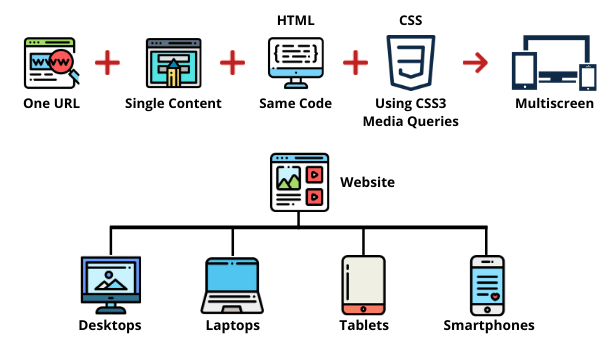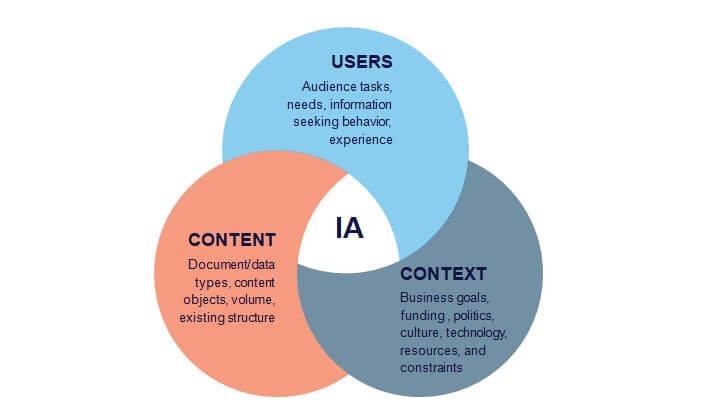Whether your Business is a corporate giant, a well-known worldwide player, a Start-Up or a small, local company, maintaining a strong, focused and relevant web presence is crucial.
Your website should be appealing and engaging. Only then will the visitors stay long enough on it and take the actions you want them to take.
However, many small business owners design their websites to save money and have complete ownership over the project. Regrettably, every so often they don’t understand the good practices of web designing, leading to a website that’s inadequately designed.
Having a poorly designed website causes businesses to lose potential customers which has a negative impact on their bottom-line. Listed below are the 12 most common mistakes businesses make when designing their website themselves.
1. Your website is too crowded
Showing too much information at once will negatively impact the user experience. Don’t cram too much information above the fold. A crowded website is never a good thing. Only relevant information should be shown right away on the website.
2. Your website has almost no content
At the other end of the spectrum are websites that are almost blank and have very little content. While minimalism in design is a huge trend right now, your website should not be excessively cryptic. Don’t leave too much to the imagination. Visitors need to know who you are and what you can do for them.
3. Your website is too confusing
A confusing website is one that has a variety of images, typefaces, color palettes and themes, none of which are connected and relevant. Your website should have consistent branding throughout.
4. Your website does not have a good CTA
CTA stands for Call To Action, and it’s the part of the website that encourages the audience to do something. It helps a business convert a visitor into a lead for the sales team. CTAs can drive a variety of different actions depending on the goals of the business. Make sure your CTA is concise and tells customers exactly what to do.
5. Poor use of content
One of the most crucial parts of any website is content. Content is what educates the visitor about your business and the products & services you offer. It should be crisp & compelling and be updated regularly.
6. Poor use of whitespace
Whitespace is the portion of a page left unmarked, the portion that is left blank or the empty space in a page. In web design terms, it’s the space between graphics, columns, images, text, margins and other elements. Use whitespace smartly to make large blocks of text less intimidating.
7. You have ugly or irrelevant images on your website
The images and photos on a website have a huge impact on its overall design. They have the ability to convey complex thoughts quickly without having to physically read the text. Don’t upload low quality or irrelevant images on your website. Always upload high-resolution images that represent your products and services.
8. Your website has navigability issues
One common web design mistake is making your navigation menu hard to find. Ensure that the navigational aspects of your website like the main menu and search bar are easily noticeable. Don’t try to do too many things at once. Keep it clean and simple.
9. There is no contact information on your website
If a visitor decides to use your services and is unable to find any contact information on your website, he or she will likely get frustrated and leave. You also need to make sure that the information listed on the page is correct. The “Contact Us” page of your website should always be just one click away, or your information should be at the bottom of every page.
10. You have too many ads on your website
Your website should not have too many ads. Seeing flashy and noisy advertisements too often on the website will frustrate your visitors and make you lose business. While they can conveniently be placed in the sidebars, too many ads should not be placed in between the content where they can annoy your visitors.
11. Your website is not mobile-friendly
According to Statista, more than half of the global web traffic comes from mobile devices. That’s why websites need to be mobile friendly and mobile responsive. If your website is not responsive, it would look extremely cluttered and unorganized on the mobile and tablet. It would result in a bad UX/UI experience for the user which you lead to you losing out on potential leads & revenue.
12. Your website has a poor readability score
Always check the readability of the content you post on your website. You might have a lot of great information on your site, but if visitors have trouble reading it, it won’t help you reach your marketing goals. Ensure that there is plenty of contrast between the background color and text color. Also, the fonts that you use on the website should be easy to read.
Final thoughts
To ensure that you avoid common website mistakes, the services of a professional Web Design company should be employed. Modern consumers have become more demanding and don’t settle for less. That’s why you need to provide them with a pleasant and engaging online experience.




































